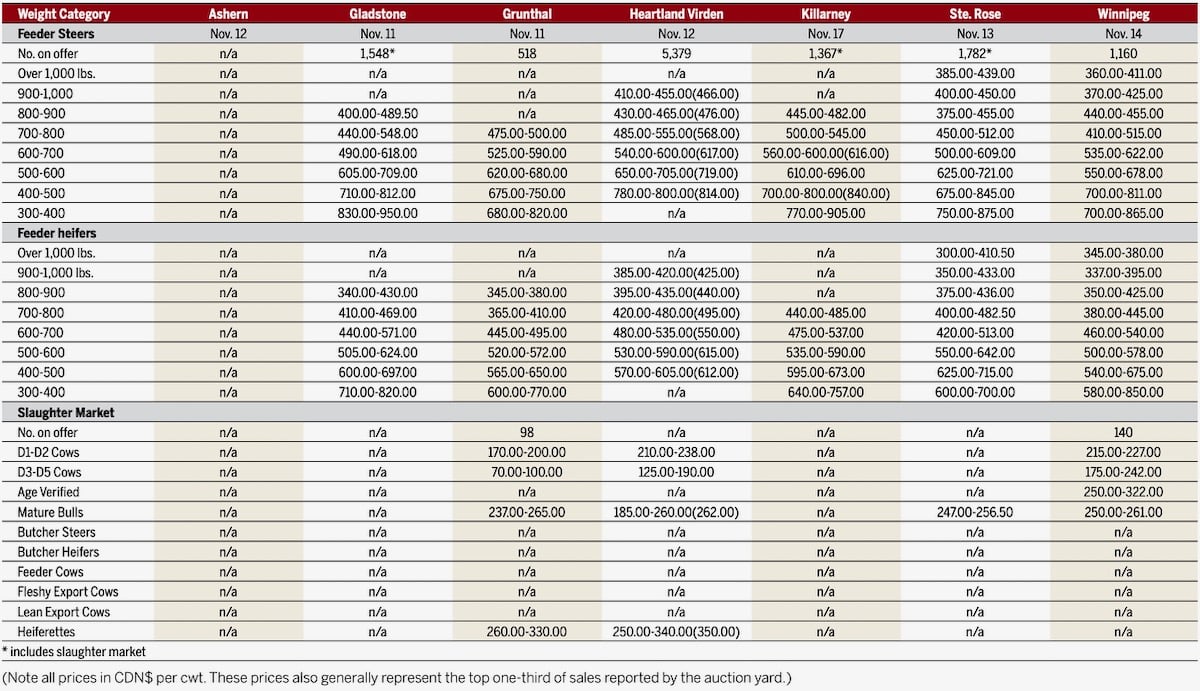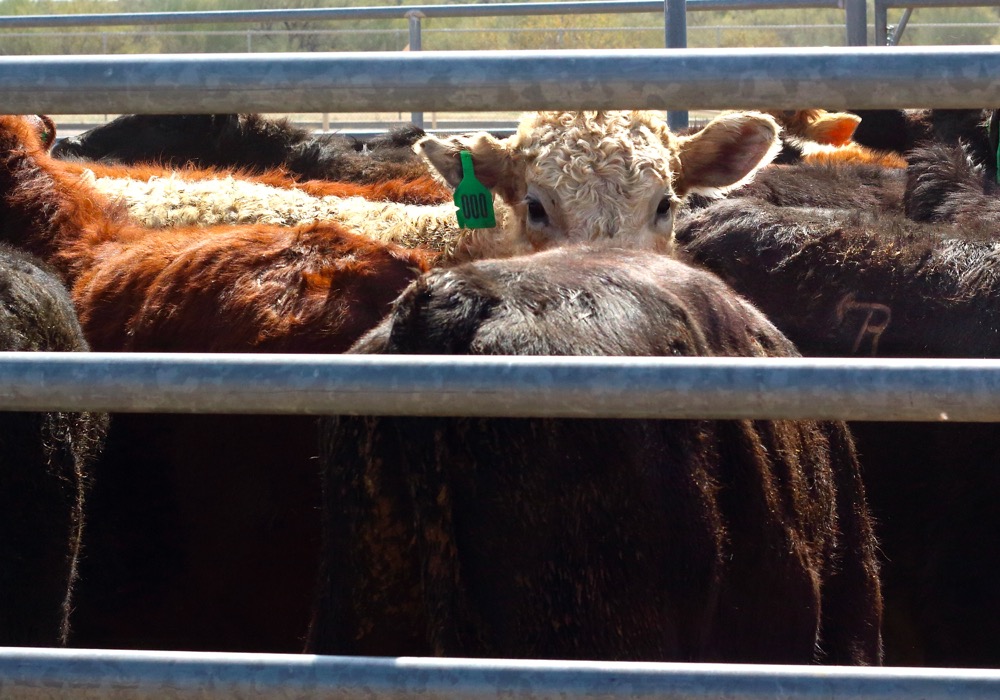Canada’s exports of pork and beef have been helped by the devaluation of the Canadian dollar, but the recent implementation of the U. S. government’s country-of-origin labelling law, or COOL, has negated some of the benefits, according to industry participants.
“Canada’s pork and beef producers get paid in Canadian dollars and because all of the international transactions are in U. S. dollars, the rate of return has improved significantly,” said Brad Marceniuk, a livestock economist with the Livestock Development Branch of the Saskatchewan Ministry of Agriculture.
Read Also

Manitoba cattle prices, Nov. 17
“On paper, it definitely makes Canada more competitive on the world market,” noted Kevin Grier, a senior market analyst with the George Morris Centre in Guelph, Ontario.
But Grier cautioned real competitiveness not achieved through depreciated currency but rather through investments that improve productivity.
“When the Canadian dollar was trading at US65 cents, it did not result in Canada being more competitive, but rather meant Canadian processors were able to price the product lower,” Grier said.
Moving product
“The market bears what it bears and that means a weaker Canadian dollar does not always help move product,” said Chenier La Salle, vice-president of international programming for the Canadian Beef Export Federation.
Marceniuk, meanwhile, felt that while the beef processors were not necessarily benefiting from the weaker Canadian currency, the better exchange rate was improving the pork sector’s competitiveness.”There has been some pork production ramp-up at Maple Leaf and Olymel with the increase in slaughter associated with the weaker Canadian dollar,” Marceniuk said.
Normally, when the value of the Canadian dollar declines, live hog and live cattle producers are more likely to sell their livestock directly into the U. S. in order to take advantage of the exchange rate.
However, with the implementation of the U. S. government’s country-of-origin labelling law, or COOL, those sales have declined significantly, Marceniuk said.
Marceniuk estimated that weanling shipments from Canada to the U. S. are down 50,000 animals a week due solely to the implementation of COOL.
The inability of the Canadian producer to unload weanlings meanwhile, depresses the domestic market.













